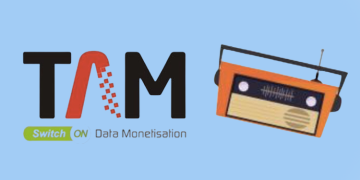Mumbai: Multiscreen usage is now the norm, with the Indian consumer cycling through multiple connected devices to access the internet. The adoption of connected devices continues to grow, according to a survey done by StatCounter and eMarketer, and India is on verge of adding 200 million smartphone users in a span of 5 years. Distinctions in consumer behaviour between these devices have blurred and previous assumptions about mobile versus desktop no longer apply.
Multi-Screen Marketing emerged as a trend in early 2014 and has since spread. It has continued to gain momentum into the first half of 2018, especially due to an increase in video consumption. This has hit digital marketing with an enormous impact, and impacted the core of marketing strategies. According to a survey done by Google, 92% of people use multiple screens to access information online, which suggests that advertisers should optimize content accordingly. With the landscape of technology growing at such rapid rate, multi-screen marketing has become the fastest and most effective way to reach the masses.
There are two leading types of multi-screening which account for 35% of screen time. Meshing, where both screens are used to consume related knowledge, and stacking, where the content on each screen is unrelated. 65% of screen time is on a constant shift between primary and secondary displays throughout the day.
Meshing (using bother screens for related content) is especially strong with TV and smartphones/tablets used for social media. A report by Accenture had revealed that 87% of people engage in second-screen usage while watching TV and consider social apps their primary connection to peers during large, televised events. Platforms like Twitter, Facebook and Snapchat tend to see spikes in activity during events such as the Oscars, politics, season premieres and finales.
This connection between TV and social media is fast becoming a strategy to reach a wider audience. The use of hashtags in commercials, social voting for reality show competitions, after-show discussions on social apps highlight that these two channels are linked from a consumer perspective. The logical foundation for a brands’ marketing strategy is to connect the dots between their television and social platforms.
As consumers simultaneously access data on multiple displays, marketers should create campaigns that deliver consistent, integrated ideas adapted for specific screens.
Here is a breakdown of each screen, its reach, and best use:
Televisions, for brand building: Although televisions are no longer most consumed screen, globally they still hold a strong position in terms of reach, and enjoy the highest advertising rate.
Smartphones, the most used screen: High usage of smartphones and new developments in smartphone tech have prompted marketers to include smartphone in their multi-screen strategy. With enormous daytime use, smartphones are good for delivering growth and setting new trends. The rise of the internet and low data prices mean that smartphones deliver strong ad receptiveness.
Laptops, to help with relevance growth: The majority of computer users (71%) use laptops exclusively. They are the top screen to reach the people who work in corporate areas and are involved in a professional life, however, they deliver only moderate advertising receptivity.
Tablets: Nearly half of tablet screen time is simultaneous with TV viewership. Tablets deliver moderate ad receptivity for brands, with peak usage in the evenings, coinciding with prime-time TV.
Multiscreen marketing opportunities are varied, but specific. Millward Brown’s Ad Reaction 2014 study states that consumers are most receptive to micro-video, TV ads with interactivity, and TV ads promoting other mobile apps, Facebook pages and websites. Multi-screen marketing that delivers more information, entertainment and rewards are generally preferred and receive better results than multiscreen campaigns which simply offer more information.
This is an authored article by Saurabh Mathur, Head- Strategy & Planning , VMLY&R India

















